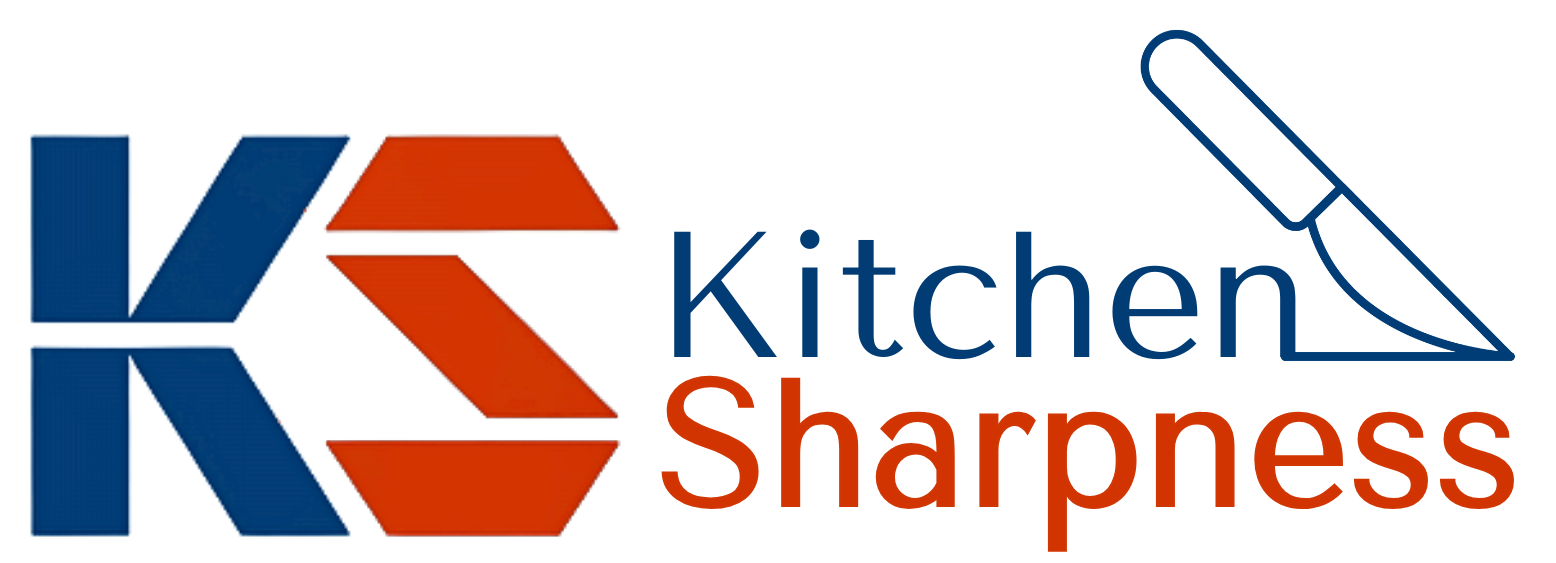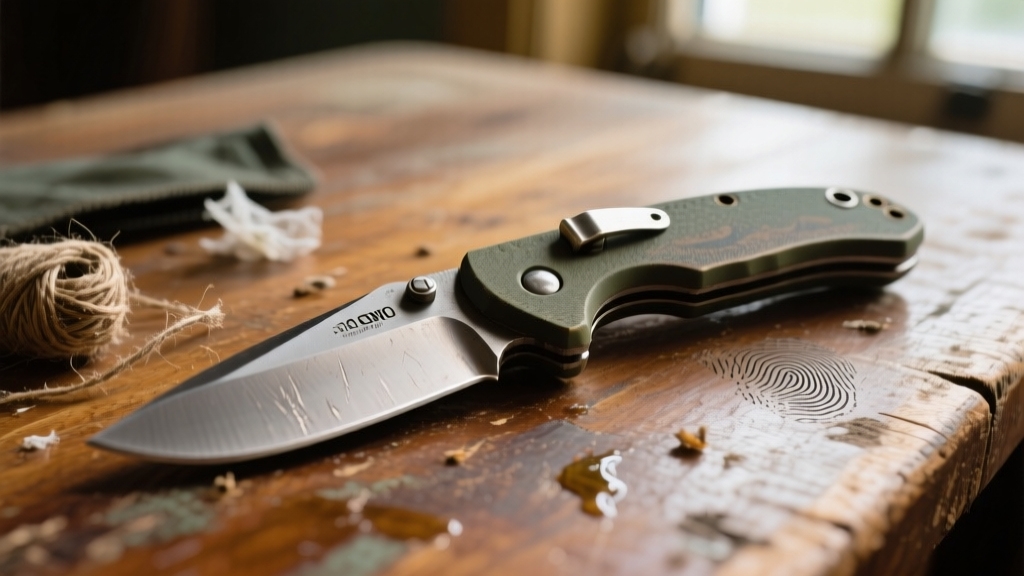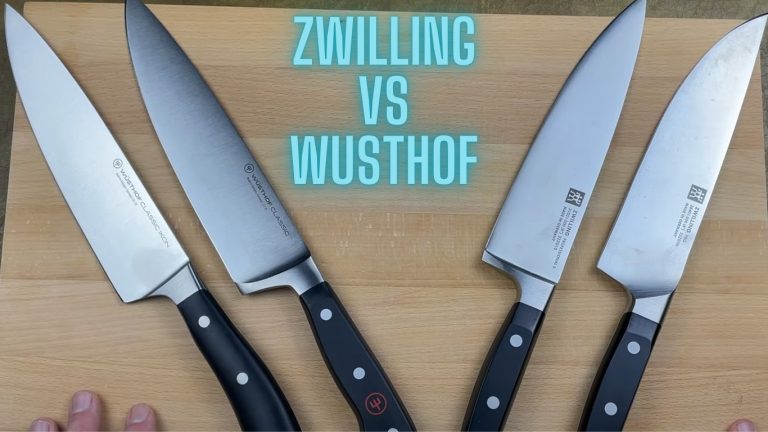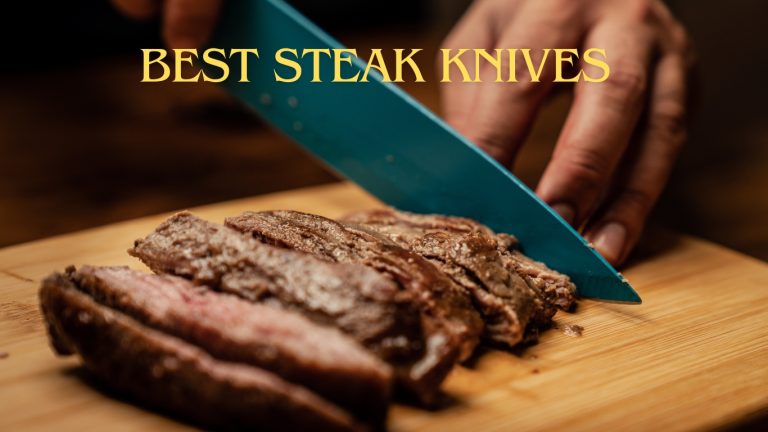What Does EDC Mean in Knives and Why It Matters?
EDC in knives stands for Everyday Carry, meaning a knife you carry daily for practical use.
These knives are compact, reliable, and designed for versatility, with features like durable steel blades, secure locking mechanisms, and ergonomic handles.
You’ll find them useful for tasks such as opening packages, food prep, or emergencies.
Understanding the types, designs, and maintenance of EDC knives helps you choose the best one tailored to your daily needs.
Key Takeaways
- EDC stands for “Everyday Carry,” referring to knives designed for daily, practical use and easy portability.
- EDC knives are typically compact folding or small fixed blades, emphasizing convenience and multi-task functionality.
- They feature durable materials like stainless steel blades and ergonomic handles for reliability and comfort.
- Common blade shapes include drop point and tanto, suited for various cutting tasks encountered daily.
- EDC knives include safety locks such as liner or frame locks to prevent accidental opening during use.
Definition and Origin of EDC in the Context of Knives
What exactly does EDC mean when it comes to knives?
EDC stands for Everyday Carry, describing knives you carry daily for practical use.
EDC means Everyday Carry—knives you keep on hand daily for practical, reliable use.
These knives are compact, often folding or small fixed blades, designed for convenience and portability.
The concept emphasizes reliable tools ready for various tasks like cutting or self-defense. Food mills excel at removing seeds and skins, allowing for precise texture control with interchangeable discs.
While the term EDC is modern, carrying essential knives dates back to ancient civilizations.
Egyptians and Romans routinely carried small blades for utility and status.
Archaeological discoveries confirm early human reliance on portable tools, illustrating the long history of carrying knives.
Pocket knives evolved from these origins, becoming popular by the Renaissance as crafted, portable tools.
Today’s EDC knives integrate centuries of development, balancing size, durability, and multi-functionality to meet everyday needs efficiently and consistently.
You rely on EDC knives to be versatile, accessible, and dependable in daily life.
Key Features of EDC Knives
Everyday carry knives combine practicality with thoughtful engineering, making their design features key to performance and user experience.
You’ll find blades made from stainless or premium steels like S30V, balancing corrosion resistance with edge retention. Blade shapes, such as drop point and tanto, suit varied cutting tasks, while edge types range from plain to serrated for versatility.
Folding mechanisms with reliable locks like liner or frame locks and spring-assisted openings ensure safety and quick deployment. Portability remains essential; these knives are compact, lightweight, and equipped with clips for easy carry.
The choice of carry options often includes pocket clips, sheaths, or lanyards to enhance accessibility and convenience. Maintaining a consistent sharpening angle is important to preserve blade edge geometry and performance.
Handles use durable materials like aluminum or Micarta, designed ergonomically for grip comfort and control. Additional features may include blade coatings for corrosion resistance and multi-tool integration, enhancing the knife’s utility without compromising compactness or reliability.
Regular maintenance and care are crucial to ensure the knife’s longevity and reliable function in everyday or emergency situations.
Practical Uses and Benefits of Carrying an EDC Knife
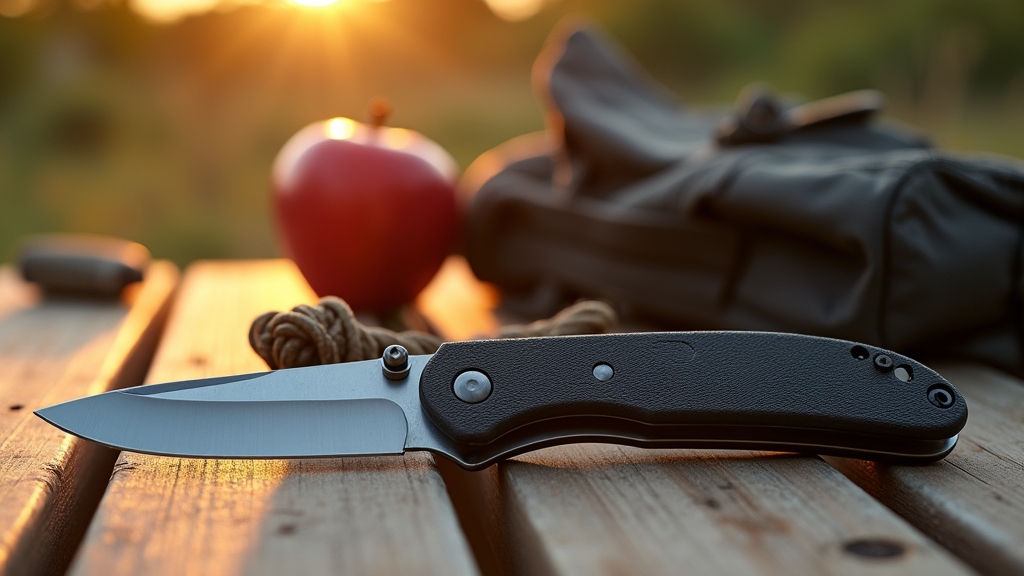
Although you might not realize it until the need arises, carrying an EDC knife equips you with a versatile tool capable of handling a wide range of tasks. This includes opening packages and preparing food at home, as well as assisting in emergency situations and outdoor activities. Its compact design guarantees convenience without sacrificing utility.
Additionally, many traditional EDC knives feature a simple, reliable design with fewer moving parts, reducing the risk of mechanical failure. With proper maintenance, these tools can maintain their integrity and performance over time, similar to how regular care benefits cutting board durability. Here’s a snapshot of practical uses:
| Use Category | Examples |
|---|---|
| Home | Opening packages, cutting rope |
| Outdoor & Camping | Carving wood, cutting fishing lines |
| Work & Utility | Cutting wires, tightening screws |
| Emergency | Cutting seatbelts, first aid |
Different Types and Designs of EDC Knives
When selecting an EDC knife, understanding the different blade shapes, edge types, and locking mechanisms is essential to matching the tool with your specific needs.
Blade shapes like drop point offer versatility, while tanto provides a reinforced tip for piercing tough materials. Drop point blades are known as the “Goldilocks blade shape,” providing a strong tip and wide belly ideal for many tasks.
Edge types range from plain for smooth slicing to fully serrated for cutting fibrous ropes. Materials such as S30V steel are popular for their strength and corrosion resistance, enhancing blade performance.
Lock mechanisms vary: axis locks ensure quick, reliable deployment; frame locks deliver strong blade security; slip joints offer traditional non-locking action. Choosing the right lock type contributes to both safety and ease of use in everyday carry.
You’ll also consider fixed blades for durability and heavy use, or folding knives for compact, pocket-friendly carry. Traditional styles like Barlow or Congress knives feature multiple blades for versatility.
Materials like G10 and S30V steel ensure strength and corrosion resistance, completing a well-rounded EDC knife design tailored to your everyday tasks.
Tips for Choosing and Maintaining Your EDC Knife
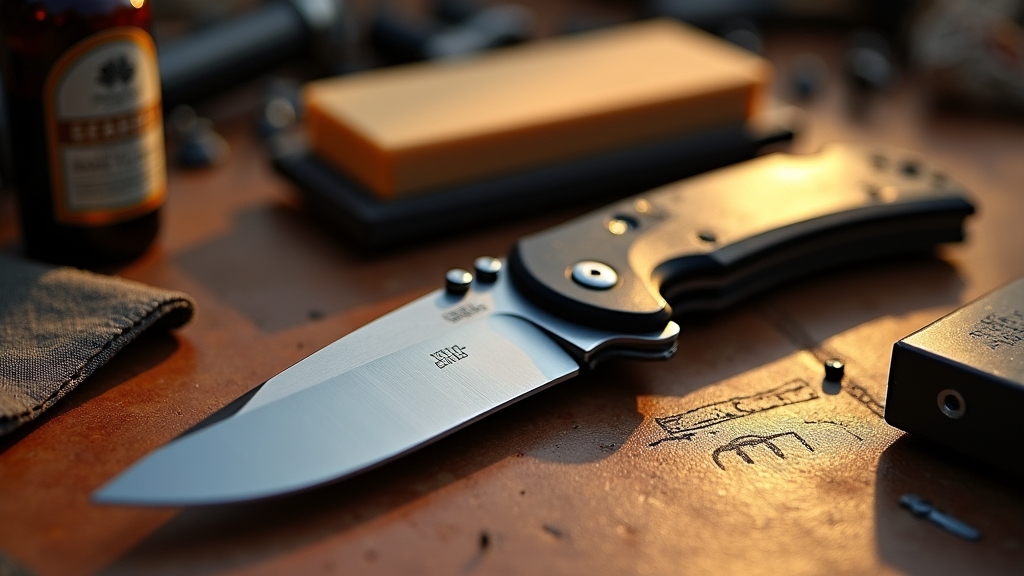
Since an EDC knife serves a variety of tasks daily, selecting the right model and maintaining it properly guarantees ideal performance and longevity. Choose a knife with materials and locking mechanisms suited to your needs, avoiding misuse like prying or hammering. It is important to check warranty conditions before disassembling your knife to avoid voiding coverage.
Choosing and maintaining the right EDC knife ensures reliable performance and long-lasting use every day.
Regularly clean your knife, disassembling when possible, using isopropyl alcohol and soft brushes to remove grime from pivots and locking surfaces. Dry thoroughly to prevent rust. Many knives feature detachable parts that simplify thorough cleaning and maintenance.
Apply viscous lubricants sparingly on moving parts and use rust inhibitors on blades, adjusting products based on climate. Sharpen only on clean blades with appropriate tools, following manufacturer angles to preserve edge integrity. Store your knife in a dry, ventilated place, inspect mechanisms frequently, and schedule monthly maintenance to ensure reliability and safety during daily use.
Frequently Asked Questions
Can I Legally Carry an EDC Knife on a Plane?
You can’t legally carry an EDC knife in your carry-on luggage on a plane. TSA bans all knives there.
Over 10,000 knives are confiscated yearly at U.S. airports, highlighting strict enforcement.
However, you can pack EDC knives in checked baggage if secured properly and comply with airline rules.
How Do I Safely Dispose of an Old EDC Knife?
To safely dispose of your old EDC knife, first clean it and securely wrap the blade with heavy-duty tape.
Place it inside a rigid container labeled “sharp object” to prevent injury. Check local regulations; some require drop-off at hazardous waste or recycling centers.
Remove non-metal parts separately. Avoid trash disposal to protect sanitation workers.
Consider donating usable knives or using law enforcement or knife exchange programs for safe surrender. Always handle with care.
What Are Common Mistakes Beginners Make With EDC Knives?
You might accidentally dull your EDC knife by neglecting cleaning and lubrication, which invites rust and poor blade action.
Beginners often misuse knives for prying or heavy tasks, risking breakage.
Choosing cheap blades or ignoring locking mechanisms can compromise safety.
Improper carry, like wrong pocket placement, increases injury risk.
Always tighten screws, inspect for corrosion, match blade type to tasks, and follow legal guidelines to keep your knife reliable and safe daily.
Are EDC Knives Allowed in Schools or Workplaces?
You generally aren’t allowed to carry EDC knives in schools due to strict zero-tolerance policies.
These policies often result in confiscation or legal consequences.
In workplaces, rules vary: corporate settings usually ban knives, while industrial jobs may permit them under strict guidelines.
Always check your specific school or workplace policies and local laws to verify compliance.
Carrying knives without authorization risks disciplinary action or legal trouble.
How Do I Discreetly Carry an EDC Knife in Formal Settings?
Carrying an EDC knife discreetly in formal settings is like hiding a stealthy ninja in your pocket.
Choose a slim folding knife with a matte finish and a blade under 3 inches.
Clip it vertically inside an inner jacket or vest pocket, or a trouser front pocket, ensuring it lies flush.
Layer clothing to conceal outlines, and avoid outer pockets.
Use a slim sheath to prevent noise and imprint, maintaining subtlety and compliance.
Keep Your Everyday Carry Sharp and Reliable
Now that you understand what EDC means in knives, you’re equipped to choose a tool as reliable as Excalibur, ready for daily challenges.
By focusing on key features like size, blade type, and durability, you guarantee your EDC knife serves practical purposes without fail.
Remember, maintaining your knife sharp and clean keeps it battle-ready for any task, turning your everyday carry into a trusted companion that stands the test of time.
